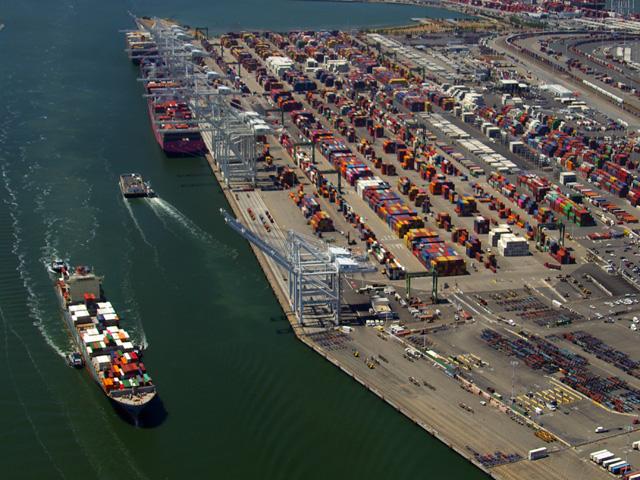Oakland Port Offers Ag Export Solutions
Port Expands Space to Alleviate Ag Export Congestion
OMAHA (DTN) -- Agricultural exporters moving goods out of the Port of Oakland, California, could get more ability to move their products onto an outgoing ship.
The Port of Oakland has announced plans to improve the flow of ag exports following an emergency meeting last month with state and federal officials about port congestion.
The Oakland port will open and operate a 25-acre, off-terminal yard equipped to move containers and store them for rapid pickup. The container yard will provide access to equipment and offer faster truck turns without having to wait for in-terminal space. Along with that, state and federal agricultural agencies will help ag exporters utilize the new container yard.
About half of all exports out of the Port of Oakland are tied to agriculture and the port is considered "the preferred export gateway" for most California ag exports and refrigerated protein products, the port stated. Typically, cargo volume at the port is about 50% exports and 50% imports, creating parity for inbound cargo and emptying containers for exports. But like the ports at Los Angeles and Long Beach, Oakland also has seen a surge of imports "clogging up the ports" and displacing both ships and containers available for exports, "especially shipments of farm goods." The Oakland port has seen "significant drops in export volumes due to skipped sailings of crucial export lines and lack of equipment for export cargo."
P[L1] D[0x0] M[300x250] OOP[F] ADUNIT[] T[]
Port congestion along the West Coast has been a major issue for more than a year, but the supply chain crisis drew more attention as 2021 saw record container imports that have clogged the ports and backed up both ships and truckers moving goods. The situation has stacked up containers at docks for longer periods of time. Compounding the problems for ag exporters has been a strategy by shippers to load ships with empty containers headed back to Asia rather than fill those containers with U.S. goods. Agricultural exports have been slowed or halted in some cases because of these moves.
The moves by the Oakland port come after state and port officials met with farm producers and transportation executives in mid-December to look at ways to deal with the congestion crisis, stating the state's multi-billion ag export industry was at stake. Several California officials and industry representatives participated in that event, which led to a list of potential options to unclog the supply chain for ag exports. U.S. Department of Transportation Deputy Secretary John Porcari, who the Biden administration tasked with serving as envoy to manage the port challenges, also held several talks with ag shippers.
"We need the shipping companies to immediately restore the export lines from Oakland to Southeast Asia and the Indian subcontinent," said Bryan Brandes, the Oakland port's maritime director.
In the meantime, the Oakland port is working to find more ways to provide space and relief for agricultural exporters, said Danny Wan, the port's executive director.
Agriculture Secretary Tom Vilsack and Transportation Secretary Pete Buttigieg wrote executives at a dozen major shipping companies last month, asking them to consider moving products out of Oakland and other ports such as Portland, Oregon, to reduce the delays at Los Angeles and Long Beach. Vilsack and Buttigieg also called for restoring reciprocal treatment of U.S. export products.
Dairy exporters last month cited they had lost at least $1.3 billion in exports due to supply chain problems just during the first nine months of 2021.
The House of Representatives also passed a bill in December with wide bipartisan support, by a vote of 364 to 60, the Ocean Shipping Reform Act. The act would give the Federal Maritime Commission more authority to pressure shippers into filling containers rather than loading empty ones at port. The Senate has yet to take up the bill.
Chris Clayton can be reached at Chris.Clayton@dtn.com
Follow him on Twitter @ChrisClaytonDTN
(c) Copyright 2022 DTN, LLC. All rights reserved.




